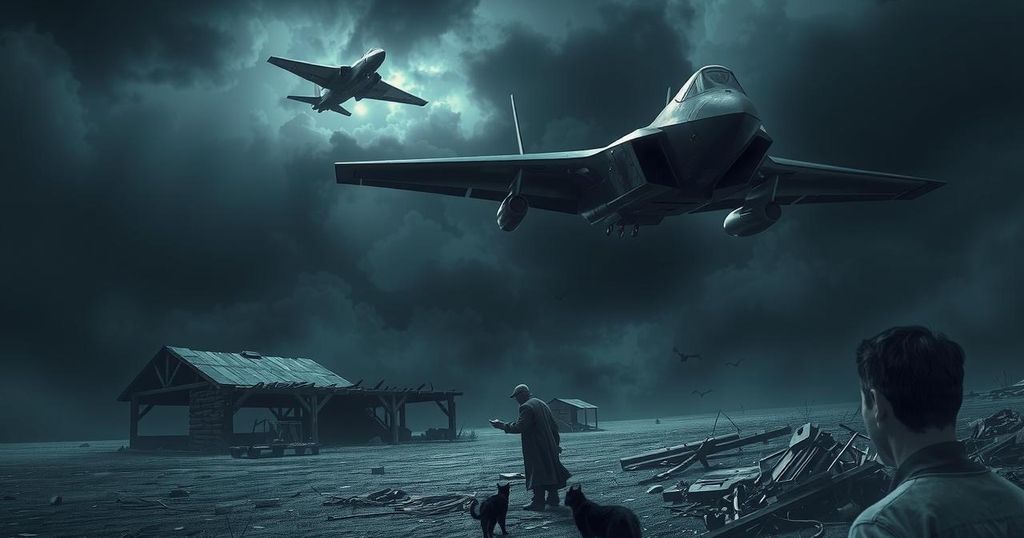AI: More Than Just a Tool – Navigating the Artistic Landscape
The article discusses the evolving perception of AI in education and the arts, illustrating students’ initial hesitation towards AI and a later disdain for its integration into creative processes. It highlights the historical context of technological advancements in design, emphasizing how these tools can shape, but also constrain, individuality and authenticity in artistic expression. Ultimately, it critiques the expectation to conform to AI usage, advocating for the preservation of unique creative journeys.
In the recent semester, I encouraged students to collaborate with ChatGPT for a bibliographic project in my history class. However, only one student embraced the opportunity, while the rest remained suspicious. Later, that student abandoned the tool when he found his topic too specialized for AI-generated insights. This initial hesitation highlighted a cultural shift regarding AI in academic settings.
During a new course, I encountered a vastly different reception. My suggestion to utilize AI elicited intense backlash from students who expressed strong disdain for artificial intelligence. Their worries ranged from its environmental impact to the ethics of using artists’ work without compensation. A resonant concern emerged: “I’m sick of instructors telling me that I have to learn it—that I have to use it or I won’t be able to get a job.”
One student, who previously mentioned their challenges with logical thinking, remarked, “It’s just a tool.” This statement took me back in time to when digital technology first began shaping graphic design. In the mid-90s, the anxiety surrounding computers mirrored today’s apprehensions about AI, with many fearing these tools would threaten our profession. Yet, contrary to the dire predictions, the design field continues to thrive, though it has evolved dramatically.
Rather than ushering in doom, computers merely transformed design into a field reserved for those with financial resources. This evolution has led to a homogenization of design, as the reliance on uniform tools has stifled individual creativity and innovation. The notion of the computer as merely a tool simplifies its profound influence on access to the field and the methods of creative expression within design.
With the rise of AI, the fear of a lack of originality pervades the artistic community. Designers face pressures to conform, leading to a visual landscape filled with redundant aesthetics. This transformation highlights how tools can dictate creativity, forcing professionals to engage with technology in ways that may dilute their unique artistic voices.
Today’s students come from a world saturated with tech, constrained by expectations to produce work that fits within established norms. The industry demands conformity to corporate structures, disregarding the growth and individuality necessary for true creative exploration. As they are pushed to integrate AI into their processes, these young creatives may lose sight of their authentic creative selves.
I am receptive to AI’s benefits in certain sectors, such as healthcare and engineering. However, I critique its growing presence in the arts. The industry seems intent on sidelining individuality, pushing creators toward AI-generated outputs instead of nurturing genuine creativity. The consequences can be profoundly limiting when artistry relies on averaging past works rather than highlighting personal insights and experiences.
AI poses a threat to the authenticity of artistic expression, shaping creators to meet predetermined outcomes rather than discovering their unique paths. It presents a potential erosion of individuality, reminiscent of how past conventions limited artistic freedom. To fully appreciate artistry, creators must traverse challenges rather than seek shortcuts, thus preserving the integrity and fulfillment of their craft.
Ultimately, education should encourage the evolution of creativity while respecting traditional processes. It is vital to empower students to embrace their artistic journeys, rather than dictating which tools they must conform to. The creative landscape is nourished by diverse voices, perspectives, and methods, all of which deserve to flourish without the constraints imposed by technological advancement.
AI is far more than just a tool; it’s a force reshaping creativity and design, often stifling individuality and original thought. While technology can enhance certain fields, it should not dictate how artists express themselves. Supporting students requires fostering their unique creative journeys rather than enforcing conformity to tools that may undermine their individuality. As we navigate through technological evolution, it becomes essential to strike a balance between innovation and authentic expression.
Original Source: commonedge.org




Post Comment